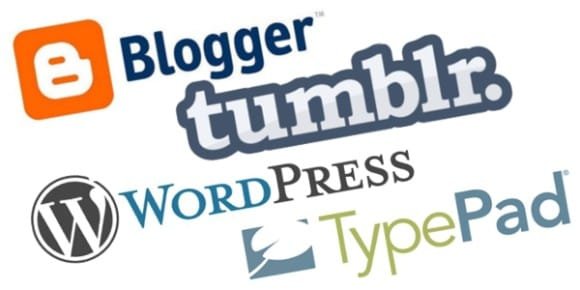A Brief History of Blogging
Sites have become an integral part of online culture. Practically everybody reads writes now, regardless of whether they’re “official” news websites associated with traditional news media, subject based sites related to one’s work or interests, or sites only for entertainment, pretty much anyone you ask has at least one favorite blog. Yet, it wasn’t always so. Web journals have a relatively short history, in any event, when compared with the history of the Internet itself. And it’s just in the past five to ten years that they’ve really taken off and turn into an important part of the web based landscape. Blogging has made some amazing progress since its unassuming beginnings. What is a part of our mainstream culture today, was once viewed as a personal diary and an outlet for early adopters of the web. Here, we have briefly discussed history of blogging.
Today, websites are more than personal diaries distributed on the web. Once in a while it seems like everybody has a blog. They assist us with building brands, attract customers, and give us news, tattle, and fascinating facts — all at the same time. It is presently a family unit term and holds a firm place in culture. It may be astonishing to learn that the history of blogging dates back to 1994, which predates social media by at least a couple of years. The accompanying timetable ganders at the history of blogging, from its beginning to its cutting edge status. Blogs are really useful in converting the visitors if they are up to the point.
The weblog, or basically “blog,” is one of the longstanding phenomena on the web. Web journals have been around virtually since the start of the Internet. Today, websites are a central procedure to any powerful web based marketing strategy, with thousands of individuals taking blogging on as a full-time profession. Here we have also discussed creative blog themes and all about blogs. The formal meaning of a blog is a website page that is created with the end goal of conversation or disseminating information. Nonetheless, the current utilization of many pages that are called web journals may leave many individuals despite everything pondering, “What exactly is a blog?”. Discussed below is a brief history of blogging.
Table of Contents
The First Bloggers

Some say Swarthmore College understudy Justin Hall distributed the primary blog. He taught himself HTML and launched Links.net, a personal diary comprising of connections to different pages Hall discovered illuminating as well as observations on his daily life. Others credit the blog’s beginning to self-depicted PC nerd Jorn Barger. After years of adding to the Usenet organization, he launched a site called Robot Wisdom in 1997 and begat the term weblog (or “web logging”), which originally transformed into the more abbreviated term “blog.”
Blogging
As of late as 1994, “blog” didn’t exist. A weblog or blog is characterized as “a site containing an essayist’s or gathering of scholars’ own encounters, observations, conclusions, and so forth., and often having images and connections to different sites,” according to Dictionary.com. It’s usually distributed backward chronological request, which means the latest posts appear first. Initially, bloggers distributed content heavy posts about their musings, sentiments, and encounters. Most websites featured one essayist (the original author) and zeroed in on personal observations.
What is a Blogger?

A blogger is an individual who creates the substance that appears on a blog. Bloggers were originally information suppliers, however today they can be full-scale VIPs in their own right. Bloggers, for example, Perez Hilton, Pat Flynn, and Kylie Jenner have made whole careers from their web journals, parlaying it into TV appearances and lucrative authorizing deals, among many different chances. There are several plans of action you can use to make cash blogging. Pat Flynn makes over $100,000 from his blog each month!
What is a Blog Example Smart Passive Pay
Exceptionally popular media sources like TheGaurdian, Rolling Stone, and the Wall Street Journal use WordPress. The Midwest Book Review is a great asset for individuals keen on advancing academic literacy and is an incredible example of a “survey” style blog/site.
Why People Blog/What is a Blog Used For?

Individuals blog for various reasons, both business and personal. For instance, websites are utilized as substance for organizations in circuitous marketing plans, to incorporate a personality with a known master in the business, or to create a connection profile for the motivations behind search motor optimization. Personal websites may be set up for social status inside a friend gathering, as an online journal, or essentially as a side interest. Many individuals in different professions will start out asking the inquiry because of the variety of blog types, eventually picking a sort based on the sort of substance that draws them most passionately.
The Emergence of Social Media Blogs
With apps like Facebook, Twitter, Snapchat and Instagram individuals are finding new ways to interface with individuals. Setting up a social media channel is easy, however you have to associate a blog website to interface with your audience in ways social apps don’t allow. Social media channels are viewed as heterogeneous blogging conditions however to overcome any issues setting up a WordPress website is suggested.
Blogging Software

The primary sites were hand-coded by their authors. Notwithstanding, the advent of blogging software removed a large portion of the heavy work from bloggers and allowed them to zero in on content creation. In 1999, Pyra Labs launched a free blog-creation administration called Blogger. The electronic software allowed anyone with an Internet association with create and populate a blog on their own terms. Different platforms followed, for example, WordPress and Typepad. A few, as WordPress, allowed clients to download the software and upload it onto their own workers for use on a separate domain.
Reclassifying The Blog
The development from the primary online journals to the current ones is as dramatic as the advancement of the typewriter to the cutting edge tablet.
As time passed, web journals transitioned indeed into apparatuses for organizations and professionals. They gave corporations the chance to interface with their audiences and attract more traffic. They also filled in as promotional instruments for creative professionals. Blogging platforms presented the choice for multi-author web journals. As it were, several individuals could post to a solitary blog utilizing diverse usernames, passwords, biographies, and photographs.
Adapting Blogs – History of Blogging

In spite of the fact that bloggers utilized their online journals as promotional devices for a considerable length of time. Google Adsense launched in March 2003, matching advertisers with bloggers and other substance creators. Bloggers went to different techniques for monetization, as well, for example, creating affiliate relationships with organizations and composing supported posts. Online journals became a staple of most sites – once in a while filling in as the entire website, however more often as a segment of a larger publication.
Huge Names in Blogs
History of blogging has many names. Throughout the long term, several major named bloggers have established loyal followings, generated significant salary, and established shows of the class. Heather Armstrong, for example, landed terminated from her position because of anecdotes she posted on her exceptionally popular blog, Dooce. The ensuing tumult over her terminating prompted “Dooced” getting inseparable from “terminated for blogging.” Gawker and other tattle heavy web journals appreciate massive popularity, as do websites dedicated to social and political commentary, for example, those found on Huffington Post and the Drudge Report. Blogging history is covered many tales, however it shows an exceptional and amazing world for unique substance creators. To launch your own blog, pursue a danger free trial at BlogPress.
From Simple HTML Text to Multimedia

Many of the most popular web journals on the planet don’t take after the original meaning of the term. The prevalence of multimedia has enabled many web journals to look like out and out sites or video slideshows at times. For instance, TechCrunch.com, an immensely popular tech website is a blog. (based on WordPress). An example of a blogspot that depends more on video content is found on Tumblr or even better YouTube; the two destinations encourage clients to blog pictures and recordings rather than text.
Present Day Blogging and The Future
Blogging remained unchanged till 2012 when another blogging platform was launched, Medium. It claims to be where anyone can go to distribute their accounts, ideas, and viewpoints on recent developments. The same year marked the launch of LinkedIn’s Influencers program, which was saved for notable business figures from the get go. These people were welcome to share their suppositions on LinkedIn’s distributing platform Pulse. Two years later, Pulse became available to all individuals from LinkedIn.
While neither LinkedIn Pulse nor medium have any sort of way to allow their clients to utilize own domain unlike many others. This is especially useful if their own web journals don’t get a lot of traffic. Another notable occasion was the launch of the .blog domain name in 2016, another high level domain turned out via Automattic, the company behind WordPress itself.
Blogs Reach the Mainstream

By the mid-2000s, web journals were reaching the mainstream. In January of 2005, an examination was released saying that 32 million Americans read websites. At the time, it’s in excess of a modest amount of the whole population. Various mainstream media locales made their own sites during the mid to late 2000s, or teamed up with existing websites to give additional coverage and commentary. By 2004, political consultants, candidates, and mainstream news organizations all began utilizing websites all the more conspicuously. They gave the ideal vehicle to broadcasting editorial conclusion and reaching out to readers and watchers.
Mainstream media sources are also teaming up with existing online journals and bloggers, rather than simply setting out all alone. Take, for example, the regular posts on CNN.com from Mashable editors and authors. Another genuine example is the purchase of TechCrunch and associated writes by AOL, which, while not a traditional media source, is one of the most established web companies still in presence. During this time, the quantity of sites became significantly more, with in excess of 152 million websites active before the finish of 2010. Virtually every mainstream news source presently has at least one blog, as do many corporations and individuals.
The Rise of Microblogs and Tumblogs
Many individuals possibly consider Twitter, however tumblogs allow for a more traditional sort of blogging experience, while also allowing for the social systems administration features of Twitter (like after different bloggers). Tumblr was the main major site to offer this sort of administration, starting in 2007. They allow for a variety of various post types, dissimilar to traditional blogging administrations, which have a one-size-fits-all post format (that allows clients to format their posts anyway they want, including adding multimedia objects).
It also makes it easier for clients to reblog the substance of others, or to like individual posts (similar to Facebook’s “like” feature). Posterous is another, similar assistance. Launched in 2008, Posterous allows bloggers to set up a basic blog via email, and then submit content.
The Growth Period

The history of blogging goes way back to the early 2000s, it was a time of development for websites. In 1999, according to a rundown ordered by Jesse James Garrett, there were 23 websites on the web. By the center of 2006, there were 50 million websites according to Technorati’s State of the Blogosphere report. To say that websites experienced exponential development is somewhat of an understatement. Political online journals were probably the most popular early websites. Some political candidates started utilizing online journals during this timespan, including Howard Dean and Wesley Clark. One important occasion in the ascent of blogging was when bloggers centered around the remarks U.S. Senate Majority Leader Trent Lott said regarding U.S. Senator Strom Thurmond in 2002.
Top to bottom point websites were also getting more popular during this time. They often dove a lot further into current news and mainstream society than mainstream media sources, in addition to remarking legitimately on what traditional media was detailing. By 2001, there was sufficient enthusiasm for blogging that some how-to articles and aides started springing up. Presently, “meta web journals” (writes about blogging) make up a sizable segment of the most popular and fruitful sites out there. Various popular web journals got their start in the early 2000s, including Boing, Dooce, Gizmodo, Gawker (the primary major tattle blog to launch), Wonkette, and the Huffington Post. Weblogs, Inc. was started by Jason Calacanis in 2003, and was then offered to AOL for $25 million. It was that sale that assisted with establishing sites as a powerhouse rather than only a passing fad.
A few major blogging platforms got their start in the early 2000s. Variant 1.0 of Movable Type was released in September of 2001. WordPress was started in 2003, however parts of its advancement date back to 2001. TypePad was also released in 2003, based on Movable Type. Some peripheral administrations to the blogosphere also started in the early 2000s. Technorati, the main major blog search motor, was launched in 2002. Audioblogger, the principal major podcasting administration, was established in 2003. The main video online journals started in 2004, over a year prior YouTube was established. Also launched in 2003 was the AdSense advertising platform, which was the primary ad organization to match ads to the substance on a blog. AdSense also made it feasible for bloggers without colossal platforms to start making cash from when they previously started blogging (however payments to low-traffic online journals weren’t large).
When bloggers started making cash from their sites, the quantity of meta websites soar. Bloggers like Darren Rowse and John Chow had made alot of piles of cash telling different bloggers how they could transform blogging into a full-time career. One early occasion that featured the rising importance of online journals was the terminating of Heather Armstrong, the blogger behind Dooce, for remarks posted on her blog regarding her manager. This occasion happened in 2002, and sparked a debate over privacy issues, that despite everything hasn’t been adequately settled by 2011. “Dooced” became a slang term to depict being terminated from one’s activity for something you’ve composed on your blog, and has made appearances in Urban Dictionary, and even on Jeopardy!
Conclusion
A great deal has changed in the 20+ years since the primary blog was ever distributed. A portion of the first blogging platforms are not, at this point available while others, as WordPress keep on flourishing. From their modest beginnings as personal diaries, sites have become a way to direct business as well as share alternative perspectives and commentary on current political occasions. The lines among personal and professional blogging are additionally obscured by bloggers adapting their distributing endeavors either through ads or by selling their administrations.
